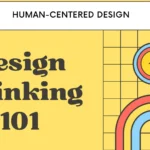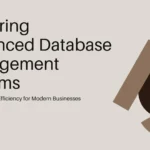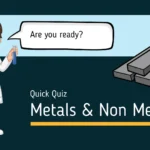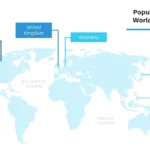Applied Geomatics
Applied Geomatics is all about mixing items such as geography, map-making, measuring land, checking things from far away with sensors, and computer tricks to collect, handle, look at, and demonstrate the layout and all sorts of location data:
I believe, as you might hold credence also, that this makes it a killer way to figure out how our world ticks, helping people make intelligent and informed choices in a significant amount of areas. Since it pulls from many different studies, those who work in Applied Geomatics score play a major role in solving fraught space puzzles.
Nowadays, everyone wants to know more about where things are and how everything fits together because making decisions based on data is of the very highest importance. Needing what Applied Geomatics brings to the table is temperature…extremely important for material like city layout plans, keeping the environment safe, farming,
and bouncing back after disasters. And in the final analysis, one finds that the ability to get, sift through, understand, and use things that tell us about when and where is key for businesses and governments aiming to use what they have wisely, cut down on the bad phenomena happening, and get more done with less hassle.

Gadgets such as drones, LiDAR, and even artificial intelligence have really changed the industry in Applied Geomatics. Now, people working in this field can catch details and be accurate in ways we haven’t seen before. Because of these spectacular tools, dealing with complicated material is now more precise and people are significantly more sure about their findings.
Before delving into how Applied Geomatics is used everywhere, from helping cities grow smartly to tracking changes in our environment and even aiding during emergencies, it’s key to understand why it’s of such significant consequence.
Applied Geomatics isn’t simply for those into studying maps or technology. It plays a large role outside classrooms and labs, solving some extremely big issues that affect us all. The whole idea starts with a special ability Geomatics has, thanks to Geographic Information Systems (GIS) and remote sensing technology:
imagine being able to not simply map items but also spot patterns and connections that aren’t obvious right away. This is gold for everyone trying to make intelligent and informed choices based on actual data. It’s about seeing the bigger picture,
catching trends, figuring out how things impacts us, and thinking about different futures before making decisions. There is unsurprisingly a potential to spark changes just by looking at things from a Applied Geomatics point of view.

Lastly, we hope this piece may enlighten you a bit on Applied Geomatics. It’s more than maps and charts. With all the new technology flooding in, Geomatic profiles are set to play an important role in tackling some really complicated challenges.
Geomatics is shaping up to be a linchpin in making sure the world we live in keeps up with the times, responding to everything from how our cities expand to how we react when crises strike.
The Importance of Applied Geomatics in Decision-Making
Now when you puzzle over high school subjects, Applied Geomatics might hit as special technology talk but realistically, it’s solely focused on figuring out where items are, linking pieces together, and catching on to changes around us or predicting ones that could hit:
it’s basically planning where to plot items on a map with quite a bit of data for leaders to figure out their next moves. Think about finding the perfect location for building something large,
or calling out spots that’ll be underwater if an enormous storm hits, or even guessing if something’s about to go wrong with Mother Nature – that’s where Geomatics steps up with its map details and data deeds. Applied Geomatics offers up the key route for making those big decisions.
Chewing over this map mastery, Applied Geomatics isn’t only gold for the head honchos…it’s pretty amazing at getting people to pull together. Clever gadgets like live-action maps, 3D pictures, and important dashboards transform major decision-making into something you can basically touch and see.
That’s extremely intelligent and informed because it unfolds the whole narrative for all to see, dropping more bodies into the chit discussion, swirling together various opinions and knowledge.
It pours in tons more clarity on what’s occurring, shaking the dust of confusion from all that data – making choices backed by deeper savvy–but here’s what’s truly about Applied Geomatics – it doesn’t only play the current hits.

Mix its talents for digging up the past, tuning into the happenings of now, and making guesses about future events, and like – it’s nearly like they’re wielding a magic globe. More than just impressing,
there’s a broad and meaningful peep it gives them into jumping ahead, avoiding snags from iced-over problems and outlining a cleaner path for what’s next. Maps and plans roll out smoother with Applied Geomatics on board, tuning down the spooks of upcoming surprises.
Mulling over this, one may immerse fully in the knowledge that getting a grasp on the ins and outs of Applied Geomatics does more than arm the decision-makers with top tools.
It’s not simply for staring down what’s in play today but for sketching in shifts looking ahead with clear eyes. Shifting from maps to forecasting the future, the concrete and clear culmination of this is astounding – showing how taming Applied Geomatics sketches a lane for taking wise, learned, lead-stepping moves.
Sparking joy in realizing managing Applied Geomatics is tantamount to securing the keys to an important puzzle.
You may be a tad disbelieving that Applied Geomatics is so crucial–but let me elucidate it for you. It practically checks the data by going over it very carefully, making sure everything adds up just right. This means when people need to make big calls, they’re not sweating bullets whether their data is on point.
Because no stone is left unturned and every fact gets a double take, those in charge can sit back a little, trusting their choices are built on solid ground. Now, wheel in the wonderful part about Applied Geomatics including the freshest technology and intellectual breakthroughs into the industry.
Imagine tiny drones zipping around snapping pics or intellectual computer material putting together future scenarios; those Applied Geomatics people stay ahead of the curve to ensure decisions are not only intelligent and informed–but next-level. The hereditary result of this? As time ticks by, methods get a major upgrade,
choices get sharper, and it’s all good news, from our own backyard to the time players in the area. It gets clear pretty quick that Applied Geomatics isn’t simply another player in the industry; it’s key, and its timing couldn’t be better.
It’s doing us all a solid by not only offering reliable data and sleek ways to solve puzzles but also ensuring we’re all on the same page, trusting the same realities: when the world feels more like a giant maze every day, leaning on Applied Geomatics gives the brass the shot of confidence they need to deal with messes and get opportunities head-on.
Applications of Geomatics in Various Industries
When it comes to finding the best places to build items such as wind farms or solar panels, Applied Geomatics is extremely useful in energy work. Energy businesses study facts such as how much sunlight hits an area, what the wind is like, and if the ground is good for building. Besides just picking spots,

Applied Geomatics keeps an eye on important material such as pipelines and power lines, making sure everything’s working right and nothing’s about to break. Now, moving on to healthcare, although it may seem unusual, Geomatics has an important role too; they use Geographic Information Systems (GIS) to spot where sicknesses are appearing,
figure out how fast they’re spreading, and find places where people can’t easily get to a doctor or hospital. By looking at data on who lives where, what the environment’s like, and how healthy people are, people working in Applied Geomatics sort out how to spread resources smartly, where to focus on helping, and ways to make everyone healthier.
Through all this mapping and analyzing, the hermetic result of this is pretty clear in energy and healthcare – Applied Geomatics helps figure out not simply where the problems are but how to tackle them in intelligent and informed ways.
When it comes to shopping and ads, you might find it surprising–but there is a profound and deep-seated certainty that xxx is important.
What it does is, it digs into content like what shoppers enjoy and don’t enjoy, what’s hot trend-wise, and what other stores are up to. It uses this data on where things are happening to point companies to the best spots for opening new stores,
figuring out who’d shop there, and even customizing ads so they hit the right people. On top of that, xxx is very important for keeping the whole buying and selling part smooth, making sure things are where they need to be, and that shops aren’t running out of popular items. In the concentrated environment,
or world, of traveling and spots where everyone wants to go, XYZ steps it up by sorting out the space-material for destinations so agencies can hype places up, do a solid job of crowd handling, and make sure nothing gets too destroyed. You may be a tad disbelieving that but through maps that speak back and guides that think for themselves,
journeys become better since tourists can easily figure out where to go next and stumble upon marvelous places they didn’t even know were there. It even goes deep, looking into the footsteps of tourists in big parks or places to relax, to keep things nice for both wanderers and nature. Finally,

in the universe of school and intellectual pursuits, xxx isn’t sleeping. It’s all hands on deck, studying space phenomena from all angles, running around collecting data, and cooking up intelligent and informed map-app things. Campuses and brain hubs get an enormous push, packing GIS and looking into why our world’s changing,
spotting the most impressive and most alive spots on the planet, and even deciphering city characteristics–but that’s not the endgame — it’s large for tackling everything from weather freakouts, keeping individuals safe from calamities, to building a road to fairness by grasping space knowledge–and making it work wonders across fields that might seems galaxies apart.
Applied Geomatics in Infrastructure Development
Planning is extremely important when it regards building material that we use every day, from roads to bridges, because it helps people make smarter decisions right from the start all the way to when things get worn out and need repair. Almost inevitably, Applied Geomatics we see basic tools being grasped to look at how traffic is flowing,
figure out if roads are in good shape, Applied Geomatics and make the travel network better so it’s comfortable, safe, and keeps people on time and prevents accidents; there is a profound and deep-seated certainty that with Geographic Information Systems (GIS), people can pick the best spots for new construction projects, plan out the routes,
and see ahead of time if a new road is going to harm the environment or not, Applied Geomatics making sure that the paths we take fit what we need without destroying the planet. And it’s not only about deciding where to put new items — it’s also about keeping an eye on the stuff we already own, like checking if a bridge is still strong or if the water pipes are okay.
By collecting information from space photos, special laser scans, and those Internet-of-Things devices that are everywhere now, the people in charge have found a way to notice problems before they turn into big repairs.
This means they can fix things in a smart way, avoiding big pauses–and making sure everything works well and stays together. This unique power is solely focused on making sure the places and ways we get around remain for a long time and do their job right.
Emerging Technologies in Applied Geomatics
Did you get that gadgets with the latest technology are amazing for tinkering with a significant amount of data and getting what it’s all about? That’s what’s occurring in the Applied Geomatics field.

One example is LiDAR—it’s an amazing tool that shoots light beams and listens back to map every single thing from hills to buildings and plants. It’s amazing, creating very detailed three-dimensional pictures showing every part of a place and the land’s shapes — Applied Geomatics a LiDAR is doing a great job, handling important tasks.
We are discussing drawing maps of cities, helping in the forests, finding old objects, and getting there when nature is very dangerous. It’s improving how we get and make plans with areas. Next we engage in an intense examination of everything related to AI and machine learning mixing into Applied Geomatics, doing material that’s new and up-to-date.
Challenges and Limitations in Geomatics
In Applied Geomatics, there are some really big challenges we must overcome if we want to unlock all the great information it has to offer. Making sure all our maps and location data are exactly right is extremely important.
However, that’s not as easy as it sounds. Mistakes in how we collect data, small errors with our tools, and differences in the way we do things can make the data less reliable; to fix these problems, those who work in Applied Geomatics need to be extremely careful about checking their work, following the rules for managing data–and making sure everything they do with data is top-notch to keep the information they provide trustworthy.
Also, when we try to combine data from several different places – such as photos from space, surveys from the air, measurements from on the ground, and even items people just report themselves – things get complicated. Each piece of data comes in its own special format, and they don’t always work well together:
almost inevitably, we see a large puzzle needing to be solved to make many different pieces fit into a clean, easy-to-understand map or database. In addition there’s the headache of making sure we’re not stepping on anyone’s toes when it comes to privacy, Applied Geomatics who owns the data, and keeping it secure. To tackle these issues, we have to work together,
spend money on amazing technology, and keep trying to make it easier to share and use this information without causing any damage. One may immerse oneself in the knowledge that Applied Geomatics has a lot of promise–but before we can get there, we’ve got several items we need to figure out – from ensuring our data’s as good as it can be to figuring out how to work with data from all corners without causing a privacy nightmare.
Future Trends in Applied Geomatics
In the concentrated environment, or world, of Applied Geomatics, there are new trends coming in that could really change how we look at and use maps and spatial data. You have this amazing big step with real-time events—imagine understanding what’s happening right now, everywhere.
Now, because of better sensors, being able to successfully deal with a significant amount of data fast, and using the cloud, we can have real-time systems in Applied Geomatics that help quickly, from providing assistance when disasters strike to keeping our cities running smoothly. It’s essentially surprising to think that systems like these can use internet-connected gadgets, pictures from space,
and very powerful computers to keep an eye on the planet, our items, and even how we all move around, Applied Geomatics making sure that people in charge can make the right call quickly when phenomena happen. And there’s even more on the horizon, like joining a game or a movie with augmented reality (AR) and virtual reality (VR).
Could you believe using and moving around virtual data like you’re actually there could be the new normal in Applied Geomatics? AR and VR take you to a place where you can walk through a city without leaving your room or see how climate change might change our world, making spatial data much more than just lines on a map.
It turns maps and models into experiences, increasing how everyone gets, uses, and thinks about spatial data. As these gadgets and technology get cheaper and easier to use, they’re expected to change things in Applied Geomatics, removing the old restrictions on solving big real-world puzzles and creating brand new methods that are solely focused on diving in and getting involved: wrapping this all up,
we hope this piece may enlighten you on where Applied Geomatics is heading next. You may find it a little hard to believe that maps and digital models could get any better–but with real-time updates and being able to step inside the data, the future of understanding our world and making it better just got a lot more interesting.
Conclusion
Understanding Applied Geomatics is solely focused on figuring out how maps, computer technology, remote sensing, and measuring items on earth all come together; this field is extremely involved because it uses ideas from geography,
drawing maps, observing the earth from a distance, surveying, and computer science to solve fraught problems that involve where things are in the world. Applied Geomatics is really important because it helps turn all the data we collect from different places into decisions that can be used by all kinds of areas.
By collecting, analyzing, figuring out, and showing where things are on a map, one may immerse themselves in the knowledge that it enables people to make better decisions in a large amount of different situations.
At the heart of Applied Geomatics is getting data about where items are, keeping track of it, analyzing it–and making it easy for people to understand through maps and visualizations: by doing this, one may immerse oneself in the knowledge that it’s bridging the gap, making it easier to decide based on data from the real world.
The Importance of Applied Geomatics in Decision-Making
I believe, as you might also think, that Applied Geomatics is largely about studying where things are located on Earth. This includes using Geographic Information Systems (GIS) to look at how things are set up, finding patterns, and understanding how things change over time to help make smart choices.
Now, when it comes to looking at Earth from up high or far away—observing the Earth from a distance, there can be happiness in knowing that we get a lot of planning details from pictures taken by things like satellites and drones; Applied Geomatics these very clear pictures are excellent for checking on how the environment is doing, seeing what’s happening with natural resources, and making plans that won’t harm the planet.
Applications of Applied Geomatics in Various Industries
Applied Geomatics isn’t only about making maps or working with satellites — it actually has some pretty important uses that touch upon a large amount of different areas. There are quite a few ways this wonderful technology makes things better, from cities planning out their futures to farmers growing our food.
Although it may seem confusing, Applied Geomatics plays a pivotal role even where you least expect it to. When natural disasters hit, it’s Geomatics technology that helps: emergency teams depend on it to figure out the disaster – such as where floods are the worst or how fast a wildfire is spreading. With tools like real-time satellite images, they can begin helping people sooner–and making sure aid goes right where it’s needed.
Go back to the farms and forests, and you’ll see Geomatics in action too. Farmers are using it to make smarter choices about everything from watering schedules to predicting how big their harvests will be,
all by looking at data like what the land’s like and what the weather is doing. And the people looking after our forests? They’re wholly invested in it too, tracking trees and spotting places that could really use a fire break long before any embers start flying.
Then there’s the environment – keeping tabs on it is another area where Geomatics shines. Want to keep an eye on deforestation or figure out where to focus conservation efforts? Spatial data, the heart of Geomatics, can lead the charge.
It’s a major help in understanding complex ecosystem changes and in making smarter decisions about protecting natural resources. Topping off this technology-xxx list, you have urban planning and development.
Cities can actually design themselves smarter and more responsibly. By harnessing the sheer, strong power of Geomatics, urban planners knit together plans for better transit systems, fair resource distribution, and even keeping urban sprawl in check.
Determining the prime spots for new parks, houses, or subway lines turns into a somewhat city-sized puzzle they can solve ahead of time.
The main point of this entire piece is that Geomatics technology helps solve big earth problems… from making farms important to keeping cities from getting too big and just generally dealing with climate change. It’s unfocused, like a secret agent, making everything better. And when you get it, there is a strong and deep feeling that figuring this out can really be amazingly wonderful.
Geomatics in Infrastructure Development
Did you know that Geomatics plays a large role when we’re working on items to make our neighborhoods and cities better, such as setting up new trains or laying down streets? It’s all into figuring out where traffic is **way** too much or finding the ideal routes for trains.
This all happens because of some extremely advanced tools that look at things from the sky — they use GIS to make sure when we say we need more buses or trains, it’s because we really do. Making trips easier isn’t the only goal here.
Next, we engage in an intense examination of situations where industries such as construction for new shopping centers or installation of our water systems come into play. Geomatics steps up again. It’s ace at finding just the right places for these projects and pulling together extremely detail-oriented maps before anyone even starts to dig,
making sure all parts will mesh well. And get this — it’s not simply about roads and malls. Geomatics is pretty key in keeping items such as our lights on and ensuring our water’s running smooth.
For all our utility needs—like keeping the internet going, electricity flowing–and making sure we don’t run into unplanned water fountain scenarios in the backyard—Geomatics keeps a tab on where all the important lines and pipes are under the ground. This means companies can enter into fixes or upgrades quicker without tearing up everything a hundred times.
Almost inevitably, we see just how vital Geomatics is for several reasons. It keeps a lot that we depend on every day, such as easy and safer travel, getting us through without a hitch. It sort of sounds like trying to build new items or just keeping our key services running without a glitch would be a giant headache without it.
Emerging Technologies in Geomatics
In the concentrated environment, or world, of Geomatics…which is basically the study of the earth through mapping…there’s a lot happening today that’s really amazing because of some cool gadgets and new ideas. Let’s enter into the details about these major industry-chippers.
First, we turn to the topic of: cities, nature, and ancient sites—seems random–but stick with me. There’s LiDAR, short for Light Detection and Ranging, and it’s amazing: it creates extremely detailed images of buildings, land, and plants.
If you’re into creating city models or unearthing old ruins, LiDAR’s your new best friend because it tells you everything about the area you’re studying. Now, onto drones, or as they’re officially known, Unmanned Aerial Vehicles (UAVs). These devices fly around with cameras and sensors, mapping content from the sky.
They’re a budget-friendly option that can go into places too risky or rough for humans. Drones are great for scouting out locations that are hard to get to, keeping an eye on large spatial regions, or helping during emergency situations. Last but not least, we’ve got Artificial Intelligence (AI) and Machine Learning (ML)—smart computer material.
They’re doing very well in the Geomatics field, changing the industry constantly. They crunch massive piles of data, pick out the components that matter, and even adjust our maps and models to make them sharper. All in all, Geomatics is getting better and better extremely thanks to LiDAR, drones, and AI.
There’s unsurprisingly a potential to witness this field becoming even more exciting and exact. And, there can possibly be gratification in your knowing that through tools and technology magic like this, our grasp on the earth’s layout is shooting into the futuristic stratosphere–real sci-fi rather sensation–but make it academic.
Challenges and Limitations in Geomatics
Geomatics, despite being extremely useful, runs into several roadblocks: we are discussing items such as making sure maps and important data are very accurate because if they’re not, people can’t make intelligent and informed choices.
It’s not hard for one to imagine how damaging the calibration of sensors, having issues with data sharing, or simple errors could cause problems with data’s accuracy. Then, there’s a major concern about how all this mapping data might affect people’s privacy. With many data floating around, issues appear over who’s watching whom, who owns the data, and how to protect everyone’s privacy.
It’s extremely important to figure this material out so that people can trust the system and preserve the privacy of sensitive data. On top of that, juggling all sorts of different data–and making them work together is no small feat; this task demands coming up with compatible systems and establishing rules that allow all kinds bingo platform ready data to cooperate for fast access.
Given many nuances, we hope this piece may enlighten people on the myriad of hurdles Geomatics navigates, including maintaining high standards of data precision, resolving ethical dilemmas related to personal boundaries in the digital age, and successfully amalgamating varied data inputs.
Future Trends in Geomatics
Next, we take a close look at how AR and VR technology is changing how we get ready for real-life situations without the actual danger: imagine a firefighter practicing for common emergencies without any real risk using VR, or city planners seeing what parks will look like before they are constructed using AR.
These kinds of technologies are changing the way we get ready and organize things – making us a lot smarter and faster because looking closely at information is now very important. With all the digital data pouring in from our phones, satellites, and drones, people who are experts in figuring this material out, such as those proficient in Geomatics, are enthralled by it.
They’re only focused on finding the main ideas and amazing facts from a lot of information. Their end approach? Utilizing their genius findings for phenomena such as heartier city planning or clearing up road traffic: discovering amazing new ideas right away.
Then, thinking about how appearing news and breakthroughs are at our fingertips because of new technology and advanced computer systems. Watching animals from afar, checking bridge safety, or foreseeing future flood woes—all managed with clever technology tools that show us a quick view of the whole scene instantly,
which is of the very highest importance for making swift, smart choices, especially in do-or-die moments. Moving on to the main point, digging deeply into Geomatics (which involves a lot of numbers) mixed with exploring imaginary worlds through AR and VR is mainly focused on improving our ways to solve problems.
By quickly soaking up facts and exploring digital lands, we’re revolutionizing how we tackle tomorrow’s headaches: we’re here zooming into decisions with much better precision and zip.
And in the final analysis, one finds that delving into the nuts and bolts of Geomatics coupled with the playful fun of AR/VR isn’t merely stripping us of ancient headaches. It’s directly wired into advancing our outlook on innovation and developing future fixes and places:
for those crafting the new age of where we live and how we keep our planet spruced, delving into these technology wonders casts us not only as bright minds but as star players, rigging the industry so when it’s time to shape metropolises and buffer the environment, we’re all in – polished, wise, and ready to roll.
FOR MORE
Unique FAQs
It’s absolutely undeniable that mapping goes beyond just sketching outlines of places. It’s about dragging the old way of mapping into the 21st century by using cool tools and smart ideas to not simply gather but actually understand all that location clutter.
Rather than just calculating the size of spaces, it’s planning on trickier phenomena, like viewing from afar with remote crawling, tapping into GIS for digital mapping, and piecing together those parts of location data to crack riddles.
Now, delve into wildlife. Think about it – mapping helps our animal friends a lot. It involves taking a bird’s eye view and processing the data to keep tabs on wildlife gatherings, their wellness, and if their turf is being destroyed by humans.
Final stage? Crafting easy and intelligent and informed game plans to keep their homes cozy and out of harm’s way. It takes a great effort to ensure Earth stays a special, rich place for every animal in the area. Onto city feelings — it’s interesting, surprising, the smart works making city routes much easier.
With the clever use of GIS tools and some intelligent and informed engineering, mapping aids in improving farms within city bounds, unclogging streets, and streamlining city services so they don’t confuse people everywhere.
Cities don’t only manage to stay afloat — they avoid falling into chaos thanks especially to GIS supporting the hard work by enabling cities to refine flow and function in the urban sprawl. Emergency situation? Enter the map expert, a great hero getting everyone ready for big natural events like earthquakes and tornadoes;
through smart technology, it shows where things are not important, the best travel paths, and safe spots until the danger is gone; this good planning helps stop problems even before they happen. Getting special points in making maps with magic?
Ah, that’s not only for fun. It crafts knowledge for jobs stretching from urban fixers, mother nature mavens, creature protectors, and beyond. Dual-wielding GIS and impressive flying skills to plot out landmarks or technology-trend battles proves without a doubt that the mapped world invites curiosity,
pivot-points landscapes of Bespoke Wizards, Urban Pulse Crafters, Lifeline Designers, Terra Guardians, you name it shown on your public profile. I believe, and you might agree as well, that understanding mapping goes far beyond what one might first think — using the special power of GIS and satellite watching opens new opportunities in improving where we live,
tracking animals, building better cities, and protecting against disasters. Mapping — or call it scanning the neck of the woods with pizzazz, it’s not only putting together charts. It’s the path unfolding countless ‘Aha’ moments into exciting roles with eager and energetic opportunities waiting.










